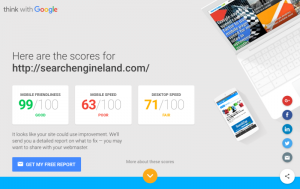— January 12, 2018

janeb13 / Pixabay
One thing that is becoming increasingly important for B2B companies is the need to deliver B2C like experiences to their customers. This means a lot of things, including embarking on a digital transformation, making the buying process simpler, and moving towards creating more personalized engagements. One thing that B2C merchants have mastered, is the regular use of data to discovers insights and drive decision making. For B2B companies to do the same, it’s important that they make data more accessible and easier to analyze for stakeholders across the company—especially when digital commerce is new to the business.
Here are the top four digital commerce dashboards that B2B merchants should be monitoring, which teams need to see them, and how they can act on the data:
1. COMPANY PROFILES
Who should see this dashboard: Strategy teams, Directors, Sales directors
Merchants need to understand how accounts they sell to are performing across various KPIs such as time since last order and lifetime revenue. This provides a holistic view of all purchasing happening across multiple buyers in the organization and insight into the overall health of the account. Regular monitoring can help merchants quickly identify potential issues. For example, if company A typically places orders on a four-week basis, but the data shows that their last order was 6 weeks ago, they can investigate to see if there is an issue or seasonal fluctuations.
2. CATALOG PERFORMANCE
Who should see this dashboard: Sales teams, Merchandisers, eCommerce team
To provide a more unique and personalized experience, B2B companies can create various catalogs to offer specialized pricing and custom product assortments to customers. It is important for modern-day B2B companies to understand the performance of each catalog across various performance indicators. As a result, a merchant is able to understand the effectiveness of a broad discount they may have provided on one catalog vs. another. Furthermore, they can identify which catalogs are driving the most revenue and identify the best-selling products in that catalog which could open conversations around testing the elasticity of their pricing.
3. QUOTES
Who should see this dashboard: Sales reps, Sales Managers, Operations Managers, eCommerce Managers
Going through a quoting and negotiation process is common for B2B companies prior to an order being placed. Improving quote-to-order conversion rates and the time it takes to come to an agreement are key to maximizing revenue for B2B companies. By regularly tracking things like median negotiation length and negotiation success rate, merchants are able to monitor trends to help them identify what is influencing a change in order completion rates. This dashboard enables data-driven conversations to take place around the performance of their quoted business and the overall effectiveness of the quotes being developed.
4. SALES REPS
Who should see this dashboard: Sales reps, Sales Managers,
Sales reps are the lifeblood of a lot of B2B companies and it is no secret that they have various metrics that are important to keep track of. For example, using a streamlined dashboard, a sales rep can quickly identify and discuss active negotiations for strategy meetings. Sales reps also need data that can help them focus their attention on their most pressing tasks such as which quotes are expiring soon, and which contracts are up for renewal. At the same time, a Sales Manager can gain a lot of value from the same dashboard. He or she can save time by monitoring team member performance across multiple KPIs, all in one place. This is important to keep individuals on track and ensure focus is placed on areas that need attention.
Digital & Social Articles on Business 2 Community
(64)





